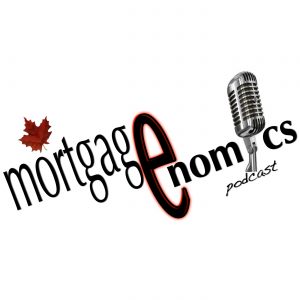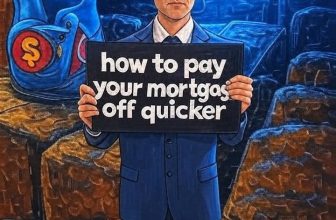(July 9, 2018) In this episode we talk we discuss the inner workings of lenders and their selection criteria for best interest rates.
Unravelling the confusion of mortgage interest rates…kinda
INTRO:
What really goes on when you pick up the phone, go online, or walk inside a bank and ask, “what’s your best 5 year rate?” (or any other rate for that matter). If you haven’t noticed by now, the answer to that question from your mortgage broker or banker has gotten very confusing and at times either misleading or simply mistakenly quoted. To be fair, there are many brokers and bankers who deliver the message correctly on their first go…but probably not without several disclaimers and underlying conditions. Now why is this? Why can’t the answer be easy? How and why, could there possibly be 4 different quotes for the same 5 year fixed rate product WITH THE SAME LENDER? Why does the rate shopper have to provide several personal details so the broker or banker can determine the precise interest rate? The answer is simple, kinda. Todays lending environment and Canada’s complex real estate market diversity from coast to coast has become a complicated web of risk management….and like never before seen, interest rate pricing has become the primary mitigator of risk. The mortgage industry has taken a few pages out of the insurance industry’s risk management policy, particularly pertaining to premium pricing. The riskier the client profile, the higher the insurance premium…or in the case of mortgages, the higher the interest rate. Listen on and learn how your interest rate is determined and which customer profile fetches the best one.
“What is the best rate?”
Ok, let’s slam through this…why are mortgage interest rates so broad and diverse these days. Let’s start with the range of interest rates that are currently available in the market today for a 5 year fixed rate. Of course, be aware that the range that I am about to tell you may have changed since the recording of this episode…but the concept (or methodology) I’m talking about will certainly remain the same. So here it is, the range of 5 year rates currently available in the market today are between 3.19% to probably about 5.25% (on the high side). So 3.19 to 5.25%…now of coarse, everyone is going to opt for, or pick the 3.19%, naturally…but here’s the thing that many Canadians are having a tough time with…and that is the rate pricing criteria. I’m just gonna state as many selection criteria that I can think of right now that are involved with determining which interest rate you get…k here we go:
• your credit score…basically your score determines which broad range of pricing you will be placed in; that could be either the prime rates, the sub-prime rates or the sub-sub prime rates
• your credit performance and history…way bigger deal than your credit score…as with the score, your current and past performance history determines which classification of rates you will be placed in
• self employed applicants…some lenders tack on a premium here but for various reasons and depending on a few things (really this is a topic for another episode)
• extended amortization periods over 25 years…in certain circumstances lenders tack on a rate premium (~0.1-0.15% increase in rate)
• rental property purchases…generally speaking, higher interest rates
• refinances…again, generally speaking, higher interest rates
• Purchase prices over $1M…typically higher interest rates
• For renewals and refinances…the status of your mortgage prior to October 17, 2016 and November 30, 2016 has a pretty significant bearing on your interest rate. Depending on various complicated status conditions of your existing mortgage, your interest rate will be determined, accordingly.
• whether you are an insured mortgage or not (and by insured I am referring to a mortgage which has a CMHS premium applied to it…in most cases, these are mortgages with less that 20% down payment)…this is a major effect on your interest rate offer, which leads to my final point…
• …the biggest and most influential selection criteria to determine how your 5 year fixed rate will be priced…the loan-to-value ratio.
Breaking it down..
Ok, so I’m gonna talk about the last couple of points in greater detail, for home purchase and refinance mortgages the driving force of interest rate pricing is the loan to value ratio and for mortgage renewals, it is the status of your mortgage prior to October 17, 2016 and November 30, 2016.
Home Purchases and Refinances
Let’s start with home purchase and refinance mortgages. Among other variables that affect the pricing (as I mentioned earlier), the main driver of interest rate pricing is the loan to value ratio. The loan to value ratio is (as the wording implies) the percentage of a properties value that is mortgaged. For example, a Million dollar home with a $600,000 mortgage would have a loan to value ratio of 60%. So then, you would likely conclude, the higher the loan to value, the riskier the loan and therefore, the higher the interest rate. But that’s not neccesarily the case. In fact, the best interest rates available in the market today are for high ratio, insured mortgages. That’s right, the mortgage holder with the least amount of skin in the game fetches the best rates these days. But don’t fret because to get these rates means that your down payment needs to be less than 20%, thereby making your mortgage eligible for mandatory regulated loan insurance (commonly known as CMHC Insurance)…and as a result, a significant premium is tacked on to your overall mortgage. For instance, for a 95% loan to value mortgage, the premium charge tacked on to your mortgage (which immediately diminishes your equity on impact by the way) is 4% of you mortgage principle…so if your mortgage is $500,000, an additional $20,000 would get tacked on to your mortgage before you even make the first payment on it (that’s assuming you’re at 95% loan to value)…now the premium decreases as the loan to value drops all the way to 80% where it is finally non-existent.
So, let’s recall that interest rate range for a 5 year fixed term that I brought up earlier of 3.19% to 5.25%. The 3.19% would very likely be a rate only offered to mortgages with a loan to value greater than 80% and all the way up to 95%. You heard that right, the mortgage holder with a meagre 5% down payment can potentially get the best rate available in the market, today. So how does this make sense? What kind of strange-risky customer incentive is this? The reason has everything to do with the fact that the loan is insured…so long story short, the lender has absolutely nothing to lose for this band of loan to values (from 80.01% to 95%). If the mortgage holder defaults on the loan, no sweat for the lender as they receive full reimbursement of the mortgage principle from the insurer. And to top it off, it was the mortgage holder who paid for the insurance from the onset of their home purchase. Crazy hey?
So that covers interest rate pricing for loan to values that are greater than 80%. But what about loan to values that are 80% or less?
So the name given to mortgages with a loan to value greater than 80% is high ratio (or insured) mortgages. Conversely, mortgages with loan to values of 80% or less are known as conventional mortgages (or uninsured). Now this band of loan to values receives higher interest rates due to the fact that they are not insured against loss to the lender. You might think, with 20% down, what does the bank have to lose? If something happens, they can just sell the house and recoup their losses and probably have some cash left behind. Well, apparently that is not the case, nor the sentiment of the lenders…at the moment, their uninsured safe zone is in the loan to value band below 70% where you can expect bargains similar to what you might see in the high ratio band (loan to values greater than 80%). So basically, in the event you default on your mortgage payments and the lender begins foreclosure proceedings, they feel that they can dispose of your property in the market swiftly by selling it at 70% of its value…thereby recouping their losses and moving on. That marker used to be 80%…and this is where we are today…confidence in the Canadian real estate market is volatile and for the most part, paranoid. Paranoid of the impact Canada’s most populated regions would have from a significant correction. So to conclude on loan to value pricing bands…the most expensive money is in the 70 to 80% loan to value band. But, at the end of the day…its all relative because don’t forget about the significant insurance premium the mortgage holder pays when they have an insured mortgage…the 5% down payment customer gets the best rate, but they substantially compromise their equity when the insurance premium tops up the mortgage.
Mortgage Renewals
Ok, so that covers mortgage purchases and refinances…let’s end off with mortgage renewals. Now I’m not going to get in to the high level details explaining this area, because it is ridiculously confusing, in fact, so confusing that many mortgage specialists can’t even wrap their heads around it. But it focuses around two particular dates when specific mortgage rules where implemented in Canada. And these dates are October 17, 2016 and November 30, 2016. Basically, the most recent insurable status of your mortgage up to these dates determines the interest rate you will receive and of coarse depending on the loan to value ratio. So, if your 5 year fixed mortgage is coming up for renewal this October that would mean you signed up for it in 2013. THEREFORE, since your mortgage was initiated, activated or registered prior to October 17, 2016…you will then have access to many more interest rate offers, then you would if the mortgage closed after October 17, 2016. One of the unintended consequences here is that the mortgage broker has become the dominant choice over the bricks and mortar bank channel and the main reason why? The broker channel has become empowered with the ability to adjust pricing to very competitive price points as their slim operational costs have opened the door to more aggressive discretionary pricing offers.
…Substantially less costs to run their business…choice and options from multiple lenders…and solitary expertise in only mortgages…mortgage brokers are far more likely to get you to the end zone then a conventional bank. I am not at all attempting to discredit the non-broker channel, but I can tell you that the pendulum has swung and this is where its landed…for the time being.
Ok, hopefully this all made sense to you and really, the big take away here is to simply acknowledge the fact that interest rate offers are not SIMPLE or…logical. But hopefully with the information that I just uncovered, at the very least, you should now be able set your interest rate expectations as to where you sit on the criteria scale for interest rate pricing. More than ever before, I strongly encourage you to reach out to a mortgage broker for absolutely all of your home financing needs…and theirs absolutely no spin to this statement. Interest rate offers change like the wind from lender to lender…and mortgage brokers represent and do business with a large majority of them. More lenders to tender your application to…this results in them competing and fighting for YOUR business, and ultimately the end result is the very best interest rate to you.
And that concludes another episode of Mortgagenomics. If you liked this episode please be so kind and leave us a review in your Apple Podcast space or whichever podcast medium you are listening from…the reviews go a long way and help us grow and improve the podcast…thank you in advance, I really appreciate it! (To directly reach out to todays guest, simply refer back to the episode transcripts and details from whichever platform you have listened from…I’ve included all the contact points). And of course, feel free to reach out to me if you’d like to discuss anything we talked about in greater detail…or any other mortgage related matter, you can find me at homefinancingsolutions.ca or follow me on Facebook by searching Marko Gelo, Mortgage Broker in Vancouver or Calgary. AND I ALSO want to encourage any mortgage professionals that might be listening in, please don’t hesitate to reach out and discuss employment opportunities as we are always looking to take on more brokers, regardless of your level of experience…our training and support systems are second to none. And finally, please don’t hesitate to share and tell your friends about Mortgagenomics Canada…the more listeners the better.
Thanks again for your time, talk to you later.
Marko






